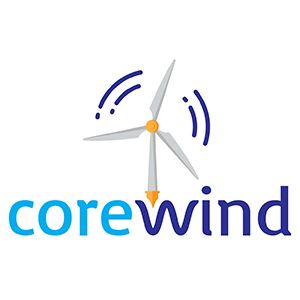Opening date: 26 May 2022. Deadline for applications: 27 October 2022:
- Digital solutions for defining synergies in international renewable energy value chains.
- Renewable energy carriers from variable renewable electricity surplus and carbon emissions from energy consuming sectors.
- Direct renewable energy integration into process energy demands of the chemical industry.
Opening date: 6 September. Deadline for applications: 10 January 2023:
You can access all the available calls through the Commission’s funding and tenders portal here.
Information on all topics of the Horizon Europe’s climate, energy, and mobility cluster (#5) and advice on how to draft a good proposal are available on the European Commission website here.
The CEF allocates up to 15% of its budget to cross-border projects in the field of renewable energy. This comes on top of Projects of Common Interest defined as part of the Trans-European Networks for Energy Regulation (TEN-E).
On 18 May the European Commission opened two CEF Energy calls for Projects of Common Interest (PCIs) to finance studies and works. There is €800 million available and the call closes on 1 September 2022.
On 8 June the European Commission organised a Virtual Info Day on the CEF calls for PCIs. All presentations and the recording of the live stream can be accessed here.
For more information, contact Iván Pineda.

In 2021 LIFE CET funded 18 topics across five areas of intervention – accelerating roll-out, digitalisation, new services and business models and the enhancement of skills, as well as attracting private financing for sustainable energy.
The LIFE CET programme has a budget of nearly €1bn for the period 2021-2027.
For more information, contact Iván Pineda.
The call will include a window for manufacturing renewables, and there will be specific windows for hydrogen, storage, and CCS projects.
No renewable energy project for power generation has been awarded financing in the first two rounds – disbursing €2.5bn in total.
On 28 June WindEurope, together with all European renewable energy associations and the European Commission, will host a webinar on the lessons learnt from the first calls for projects and will look at how to ensure a higher rate of success for these projects.
In addition, the second call for small projects under the Innovation Fund is open with an application submission deadline of 31 August. The call has a budget of €100 million.
The agenda for the workshop is available here. And you can register here. For more information on the Innovation Fund, please contact Iván Pineda.
- Design analyses and the optimisation of mooring and anchoring systems for floating wind.
- General recommendations on O&M strategies for floating wind farms, covering a comprehensive set of floating wind-specific O&M requirements and a review of state-of-the-art inspection and maintenance strategies and monitoring techniques.
- An assessment of the effects of bathymetry irregularities on the energy dissipation of a mooring line.
- The development of the FowApp, a software assessing the performance, costs and environmental impact of floating offshore wind projects.
- A review of existing international Floating Offshore Wind Turbine standards, an investigation into current commercial offerings and a work-in-progress status update of COREWIND design practice recommendations is presented in the report on preliminary market assessments and development needs.
The project will carry out a survey on the levelised cost of energy from floating offshore wind to validate its modelling. To take part in the survey please contact Lizet Ramírez.
Follow us on Twitter and LinkedIn.
For more information, visit our website or contact Lizet Ramírez or José Luiz Domínguez.
About Corewind: The COREWIND project provides disruptive and cost-effective solutions for floating offshore wind technology leading to cost reduction. It is developing innovative research, modelling and optimisation for concrete-based floating substructure concepts.
In April at WindEurope’s annual event in Bilbao, the Chief Technology Officers of ETIPWind (pictured above) met to take stock of the platform’s work and to consider the future challenges it should focus on.
ETIPWind experts met again in May and June to elaborate on the challenges identified by the CTOs linking them to the ETIPWind Roadmap. This work will be used to prepare recommendations for Governments as they revise their National Energy and Climate Plans (NECPs) next year.
Save the date! ETIPWind will be hosting a high-level event in Brussels on 13 October 2022. The agenda and registration details will be issued soon. Make sure to stay connected with the platform to receive any additional news – you can subscribe to our news distribution list here.
For more information, contact Iván Pineda.
About ETIPWind: ETIPWind works to define and agree on concrete research and innovation (R&I) priorities and communicate these to the European institutions and other decision-making bodies in order to support the EU’s ambition of a decarbonised economy by 2050.
The documents include:
- Legislative amendments to the Renewable Energy Directive.
- Recommendations on speeding up permit-granting procedures for renewable energy projects and facilitating power purchase agreements.
- Guidance to Member States on good practices to speed up permit-granting procedures for renewable energy projects and on facilitating Power Purchase Agreements.
The interim results of RES Simplify project and the national reports were published together with REPowerEU on 18 May. You can find them here.
The project consortium will organise dissemination events across the EU Member States to promote the conclusions of the project.
For more information, please contact Viktoriya Kerelska.
About RES Simplify: RES SIMPLIFY project is a project funded by the European Commission on permitting renewable energy. It is coordinated by the Consultancy Eclareon, in partnership with Oeko-Institut, WindEurope and SolarPower Europe. The project aims to speed up the permitting process at a national level for new renewable energy projects, including onshore and offshore wind.
|
Legal notice: The views represented in this newsletter are those of its authors and do not represent the views or official position of the European Commission. |
 |








